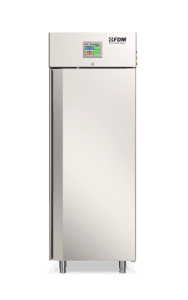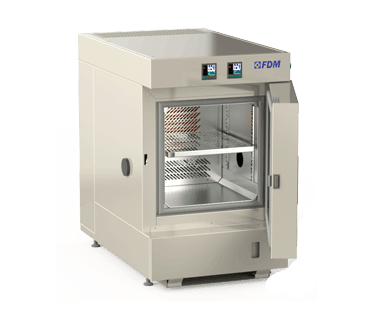
When we discuss climatic chambers and climatic tests we usually refer to a series of well-known environmental parameters: temperature, humidity, solar lighting and simulation of climatic events such as rain.
However, there is another factor to be taken into maximum consideration in some specific sectors and it is vibrations.
What are the Vibration Tests
Science defines vibration as an oscillation of relatively small amplitude, and of relatively large frequency. This definition also includes microscopic vibrations, those of an atomic nature but obviously we are interested in the macroscopic ones which are mechanical oscillations with respect to a reference point, determined by pressure waves that are transmitted through solid bodies.
Vibration tests in a climatic chamber subject the material to be tested to vibration on 3 axes, the spatial axes of length, width and depth.
Perform
Climate Stress
Discover the new series of Climate Chambers for controlled climate testing
How the Vibration Tests in the Climatic Chamber work
There are several ways to integrate the vibration function into your climatic chamber but the most common is to place it on a platform generally called a “shaker”, a 3-axis vibration table.
The shaker can swing horizontally, vertically or on all 3 axes. Depending on the test to be performed, the vibration can be programmed with one, two or three movements and at different frequencies and speeds.
It should be noted that vibration tests are always performed in conjunction with classical climatic tests, i.e. together with thermal cycles and climatic cycles.
The so-called vibration-thermal tests are necessary to reproduce the real conditions in which the materials will be subjected to vibrations and sudden changes in temperature.
Which Materials Are Affected by the Vibration Tests in the Climatic Chamber?
Most of the materials that must be subjected to a vibration test in a climatic chamber are the components of vehicles and equipment that will face extreme conditions, namely those of the military and aerospace engineering sectors.
As we have said, the vibration tests cannot be isolated from the other climatic tests because the extreme conditions to which these components will be subjected will occur simultaneously.
The standard that regulates most of the tests - including vibration tests - on military equipment is MIL-STD-810. While the vibration tests for the aerospace industry are described in ISO 23670: 2021.
It should be noted that occasionally other sectors also have to deal with vibration tests and the ISO / TC 108 / SC 2 standard regulates vibrations for machines, vehicles and structures in general with specifications for the various individual cases.
You cannot find the ideal chamber for your test?
Create your own environment, according to any test requirement
The FDM Climatic Chamber
For over 70 years, FDM - Environment Makers has been producing climatic chambers that combine the most advanced technologies with simple and intuitive interfaces that help the operator at every stage of the process.
We at FDM always meet customer needs and can create custom chambers for every type of need. Write to us to find out more.
Would you like to receive a quote or do you have questions about the product?
Contact us to receive more information about this Product.



